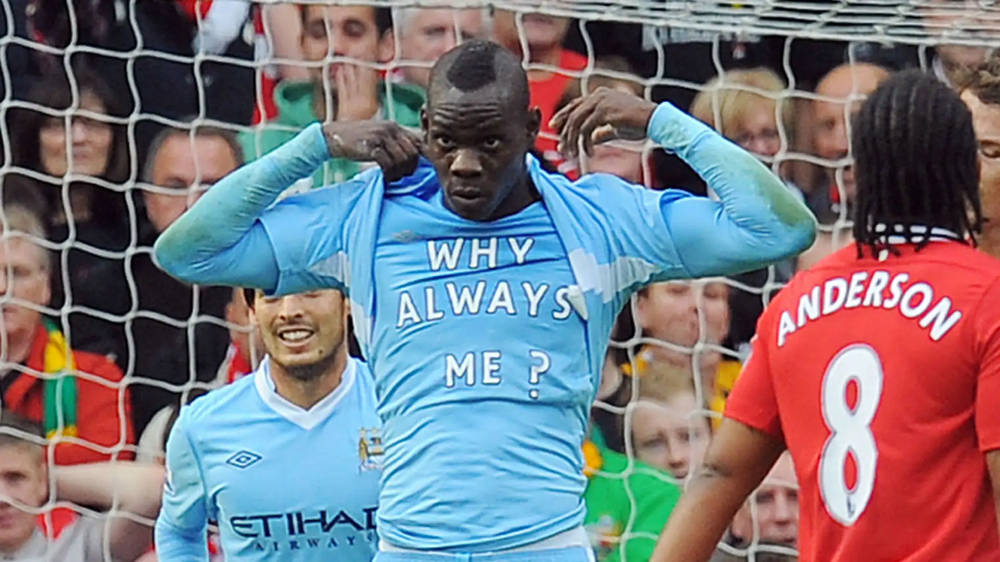-
Posts
4,008 -
Joined
Content Type
Profiles
Forums
Events
Blogs
Gallery
Everything posted by Woodstock Jag
-
Worth double checking but I think the Premium deal in previous seasons (which is now the standard deal) also includes a couple of hospitality spaces for a match of choice (which broadly explains the price difference and would mean the forum draw could include another prize…)
-

The Jags Foundation - News Bulletin Thread
Woodstock Jag replied to Woodstock Jag's topic in Main Jags forum
As FT has said, the PTWFC pledge is a minimum of £5k per season. Last year we honoured this through five £1,000 payments staggered across the season. We've made the first of these for 2025-26 already and the plan would presumably be to do the 2nd, 3rd, 4th and 5th in September, November, January and March (or thereabouts). The cumulative figures to date in terms of financial support across pledges, donations and sponsorship are: £397k to the Football Club (£170k in season 2024-25) £38k to the Youth Academy (£24k in season 2024-25) £11k to PTWFC (£7k in season 2024-25). £446k in total in just over 3 years (and significant financial support to the Club only really started properly in early 2023). The figures £170k and £7k above are higher than the respective year-long pledge totals (£150k and £5k) because of supplementary fundraising (mainly last year around the hospitality takeovers and Foundation shirt-related raffles/auctions). Additionally, the Foundation has about £55k of cash reserves and has made (cumulatively) about £7k of support to various community causes, including (indeed mainly) those spearheaded by or partnered with Jags For Good and/or the PT Charitable Trust. -
Just as a bit of an example of why this rumbles on... the interview with PLZ has people commenting on Facebook saying that Brian Graham turned it down because he didn't want to give up playing. Which is bizarre, because he still had a year left on his Thistle contract and what he was offered was a combined head coach and playing role. No one was asking him to give up playing.
-
Worth remembering that James Cairney did specifically interview Brian Graham about the Sporting Director/Head Coach dynamic at the very outset back in early April. https://www.heraldscotland.com/sport/25081630.graham-expects-change-thistle-summer-following-baraclough-chat/
-
No real disadvantage to them, and would bring a lot of goodwill. The one advantage here is that the two clubs have got six months to work something sensible out here so that you don’t have 800+ people who would otherwise have watched this game simply going to the Boxing Day sales.
-
I was thinking the one in November.
-
Thinking aloud here... I wonder if the Clubs might discuss the possibility of reversing the fixtures.
-
Important context here: (1) Edinburgh City do not own Meadowbank Stadium (I believe it’s owned by Edinburgh City Council) - they only have a rental agreement in place so they can use it for matches (2) The stadium is also used for other events and Edinburgh City don’t control when those happen (3) Back in August 2024 (!) an organisation called Deadly Dozen (who run fitness challenge events) had started advertising tickets for an event on Saturday 12th July - tickets appear to have been on sale for 10 months and have been sold out for a while (4) If a date is likely to be unsuitable for a League Cup fixture, it is incumbent on the home side to notify the SPFL in good time and before the fixtures are announced and confirmed (5) Thistle were only very very recently notified that the date set by the SPFL was not going to be possible (6) If the Clubs are unable to agree to an alternative date for a fixture, the SPFL has the authority to set an alternative date anyway
-

The Jags Foundation - News Bulletin Thread
Woodstock Jag replied to Woodstock Jag's topic in Main Jags forum
That particular picture was taken at Prague Castle in January! An eclectic mix of football stadia in the Czech capital... -

The Jags Foundation - News Bulletin Thread
Woodstock Jag replied to Woodstock Jag's topic in Main Jags forum
TJF Election Results 2025 https://thejagsfoundation.co.uk/tjf-board-election-results-2025/ 684 participants (slightly down on last year, better than turnout in recent SMISA, MCT and SMISA elections) 41% turnout (as above) Votes totals Graeme Cowie - 479 Simon Dickson - 368 Ben Parker - 276 Davie Brown - 258 Charly McGlinchey - 255 Max Ramsay - 215 Three positions available, so Graeme Cowie re-elected, and Simon Dickson and Ben Parker will join the fan board at the AGM on Thursday evening. With Stuart Goldie stepping aside during the voting period, it was not possible to alter the voting process to give each member 4 votes instead of 3. This means we couldn't fill the 9th spot on the board with a shorter-term (unlike what happened last year). It's for the new-look TJF board to decide whether/how to fill that position via co-option, and that will be one of the items on our agenda when we first meet as a group (some point later in June). Thank you to everyone who took part in the process yet again. And on a personal note, thank you to those who have, probably in grave error, placed their trust in me for a second term. Edit to add: here is the Balotilo page with the results. The email members were sent with the link to vote contains a unique auto-generated code to them, for authentication purposes (as was the case in the Tranche 2 vote). -
Undisclosed fee can mean literally anything. The last time I can remember that a player left or arrived at Thistle for a "disclosed" or "reported" fee was Aidan Fitzpatrick to Norwich for £350k. Liam Lindsay went for an "undisclosed" fee. It was about £350k up-front and a bunch of accumulated add-ons that ended up earning more than £1 million in payments. Chris Erskine went to Livingston for an "undisclosed" fee. It later turned out that it was £1 and Stevie Lawless mercilessly wound him up by getting him the new nickname Quiddy. People will read whatever they like into the fact that a fee is undisclosed. The mundane reality is that football clubs, both buyers and sellers, don't like disclosing transfer or contract information because knowledge about the figures gives their competitors an advantage. Which, of course, doesn't stop agents putting about figures (sometimes accurate, often not) on behalf of their clients, to talk them up, to talk clubs down or to engineer a better deal for their guys.
-

The Jags Foundation - News Bulletin Thread
Woodstock Jag replied to Woodstock Jag's topic in Main Jags forum
On the budget, we’ve set in the diaries a meeting for Monday for the Finance Working Group, reps from the Club Board, and the trustees to discuss it. Earliest that diaries work while allowing for proper feedback on the initial questions/feedback. Nothing sinister, everyone seized of the need to get this done promptly now that we have a draft and notes and the opportunity to discuss. -

Predicted Championship Finishing Positions 2025-2026
Woodstock Jag replied to partickthedog's topic in Main Jags forum
1. St Johnstone 2. Dunermline 3. Raith Rovers 4. Partick Thistle 5. Ross County 6. Ayr United 7. Airdrie 8. Morton 9. Arbroath 10. Queen's Park -

The Jags Foundation - News Bulletin Thread
Woodstock Jag replied to Woodstock Jag's topic in Main Jags forum
-
I should say there were some volunteers came forward and I did pass details onto admin but I’m not sure what’s happened with it?
-
“99 And Out: Handled Ball Thistle Archive was right” T-shirts coming to a store near you
-
In short, not unless his playing contract specifically provides otherwise. A club is in breach of the SPFL rules if they induce pretty much anyone in a first team football facing role at a football club to terminate their contract early. In Brian Graham’s case, he is contracted for a further year (until the end of May 2026). This would typically mean that he can only start unilaterally talking to other clubs from January 2026 about contracts to take effect no earlier than June 2026. For anything to happen earlier, permission would need to be sought and secured from the Thistle board, to avoid a breach of Rule D9 of the SPFL Rules and Regulations. When you hear about Clubs “granting permission to speak” to players or managers, this means the candidate’s existing Club has consented, whether to an interview or to personal contract negotiations. Normally, if compensation is contemplated, this would have to be negotiated before consent was given. Whilst “tapping-up” does happen in football, if clubs get caught doing it the rules are actually enforced and fines issued. A notable example of this was Falkirk tapping-up Ray Mackinnon when he was Morton manager in the 2018-19 season. For all the good it did Falkirk as he got them relegated!
-
I'm not sure the SPFL does have an insurance policy for this. The liability is built into the funding distribution model. Part of the model is that a share of the ticket revenue raised in play-off fixtures covers part of the parachute payment. In reality, the SPFL's share of the gates for a well-attended set of playoffs would only cover about half of the parachute payment for the initial relegation year. The funding model therefore broadly proceeds on the assumption that, in most years, a team will not be relegated through the play-offs. This assumption has proved to be correct so far! Edit to add: poorly attended play-off fixtures, such as those that involved Livingston this year, do dent a hole in the model.
-
Martin Towers storms into the lead of our Easyfundraisers!
-
-
Paul McGinn's only cap - substitute appearance in 1-0 win over Austria in September 2021 Stephen O'Donnell's last cap - substitute appearance in 2-2 draw with Austria in March 2022 Kevin Nisbet's last cap - substitute appearance in 2-0 win over Georgia in June 2023 Jack Hendry's last cap - full appearance in 1-0 defeat to Hungary in June 2024 After those four, I think you're back to Graham Dorrans in 2015, then a string of "joined us afters" like: Cammy Bell in 2010 Jackie McNamara(!) in 2005 Billy Dodds in 2001 Derek Whyte in 1999 Simon Donnelly in 1998
-
I think it's Alan Rough. His last cap while technically still a Thistle player was the 2-1 defeat at Wembley in April 1982. He'd signed his contract with Hibs and would have been a Hibs player by Spain 1982. John Hansen played against Yugoslavia in June 1972 in the Brazil Independence Cup. I can't (immediately) see anyone who played more recently than that other than Rough who was a Thistle player at the time. But I'm probably missing someone.



